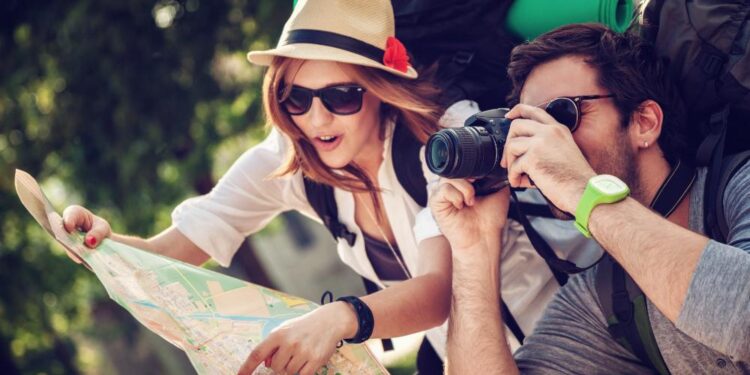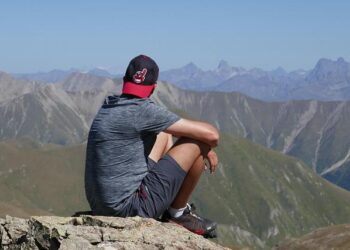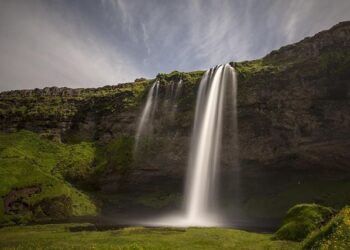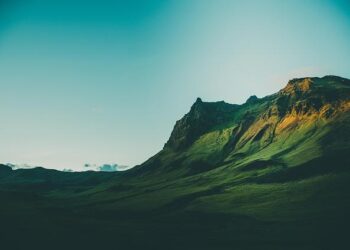Reykjavik, Iceland – Thousands of tourists have gathered to witness a series of spectacular volcanic eruptions that have transformed Iceland’s rugged landscape into a fiery spectacle. The dramatic displays of molten lava and ash plumes, captured in real-time by both visitors and news outlets, highlight the island nation’s unique position atop the volatile Mid-Atlantic Ridge. As authorities monitor the ongoing geological activity closely, the eruptions continue to draw global attention, blending natural wonder with underlying concerns about safety and environmental impact.
Spectacular Volcanic Eruptions Draw Crowds to Iceland’s Fiery Landscapes
Across Iceland, a surge of visitors has flocked to witness nature’s fiery spectacle unfold. The latest volcanic eruptions have transformed the remote landscapes into glowing canvases of molten rock and billowing ash, drawing geology enthusiasts and adventure seekers alike. From safe vantage points, tourists capture breathtaking views of lava fountains and rivers of molten rock carving through the terrain. Local guides emphasize safety while sharing insights into the island’s unique tectonic activity that fuels these dramatic outbursts.
The eruptions have not only sparked excitement but also brought economic opportunities to nearby communities. Small businesses are thriving as demand rises for tours, accommodations, and safety equipment. Authorities continue to monitor the volcanic activity closely, coordinating with scientists to provide accurate updates. Visitors are advised to prepare for rapidly changing conditions and to respect all safety barriers during their fiery exploration.
- Popular viewing spots: Fagradalsfjall, Reykjanes Peninsula
- Peak visitor hours: Late afternoon to evening
- Safety measures: Restricted zones, mandatory guide accompaniment
- Recommended gear: Sturdy boots, warm clothing, gas masks
| Volcano | Last Eruption | Lava Flow (km²) |
|---|---|---|
| Fagradalsfjall | 2024 | 1.7 |
| Eyjafjallajökull | 2010 | 0.8 |
| Hekla | 2000 | 2.3 |
Safety Precautions and Guidelines for Tourists Witnessing Active Volcanic Sites
Visitors approaching Iceland’s fiery landscapes must prioritize personal safety and respect the volatile nature of active volcanic sites. It is crucial to stay within designated viewing areas, as straying into restricted zones not only endangers lives but can also disrupt scientific monitoring efforts. Tourists are advised to wear sturdy footwear, preferably waterproof hiking boots, and long-sleeved clothes to protect against sharp volcanic rocks and acidic gases. Carrying a gas mask or respirator is highly recommended during periods of increased volcanic activity due to the emission of sulfur dioxide and other harmful gases.
Adhering to official guidelines and expert instructions can significantly reduce risks. Before visiting, always check updates from local authorities and geological institutions for real-time hazard assessments. Emergency contact numbers should be saved on mobile devices, and group tours should never split without informing guides. The table below summarizes essential items to bring and behaviors to adopt for a safe volcanic excursion:
| Safety Measures | Recommended Actions |
|---|---|
| Gear | Hiking boots, gas mask, long-sleeved clothing |
| Behavior | Stay on marked paths, avoid restricted areas |
| Preparation | Check updates, inform guides, save emergency numbers |
How Local Authorities Are Managing Tourism Amid Natural Phenomena
Local authorities in Iceland have implemented a series of adaptive measures to balance the intense interest in volcanic eruptions with public safety and environmental preservation. Access to eruption sites is carefully monitored, with designated viewing platforms and guided tours ensuring that tourists observe from safe distances. Additionally, real-time updates via official social media channels and mobile apps provide visitors with critical information about eruption activity and weather conditions, helping to prevent accidental exposure to hazardous zones.
To mitigate the impact on local ecosystems and infrastructure, authorities have introduced:
- Restricted vehicle access during peak eruption events.
- Temporary closures of vulnerable hiking trails and campsites.
- Collaboration with local tour operators for sustainable visitor management.
- Deployment of emergency response teams equipped for rapid evacuation if needed.
| Measure | Purpose | Effectiveness |
|---|---|---|
| Designated Viewing Platforms | Safe Observation | High |
| Real-time Alerts | Visitor Safety | Critical |
| Trail Closures | Environmental Protection | Moderate |
| Emergency Teams | Rapid Response | Essential |
In Summary
As volcanic activity continues to shape Iceland’s dramatic landscape, the island nation remains a magnet for tourists drawn by the rare opportunity to witness nature’s raw power firsthand. While officials emphasize safety precautions, the captivating eruptions serve as a reminder of the dynamic forces beneath the Earth’s surface. Authorities and experts will continue to monitor the situation closely, ensuring that visitors can experience these awe-inspiring events while minimizing risks.
















